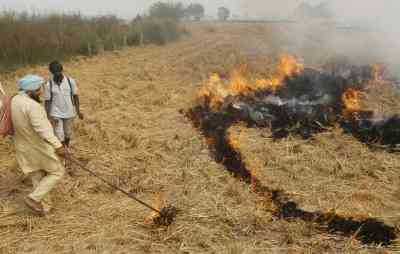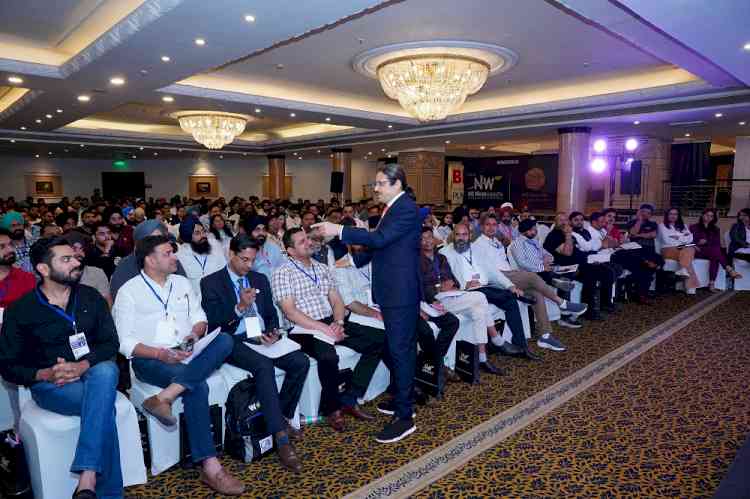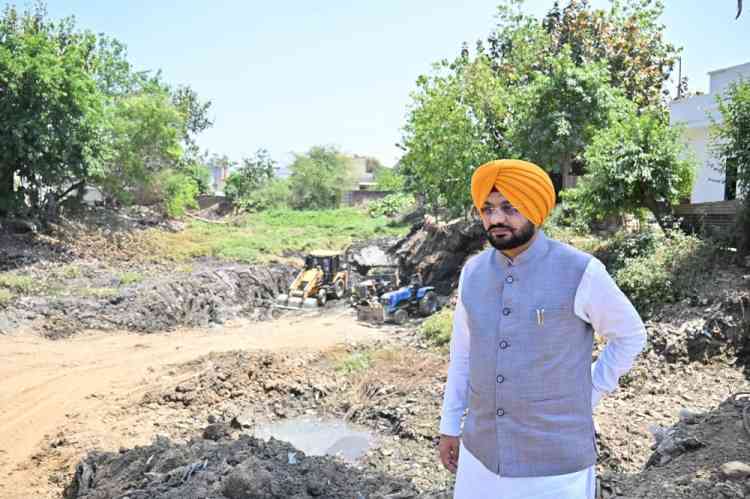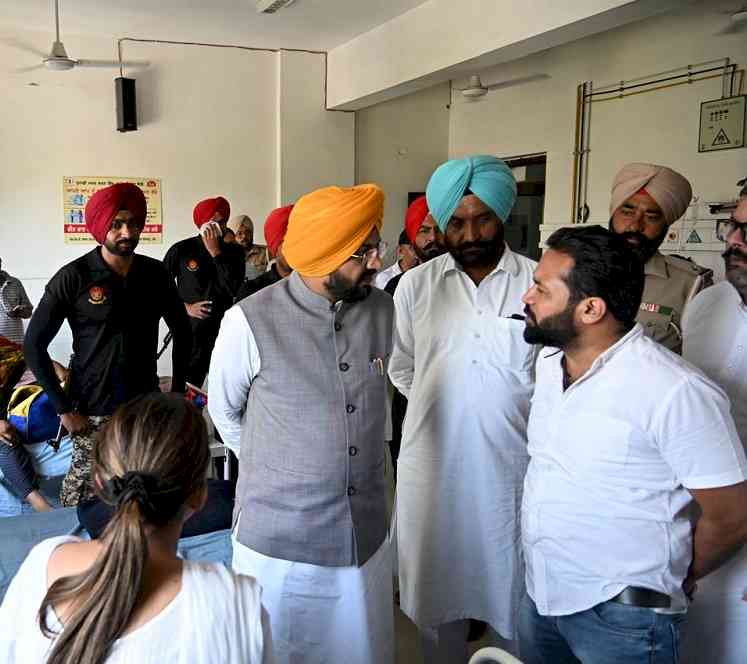Nearly half of Punjab’s crop residue machine users continue to burn loose straw: Study
Nearly half of Punjab farmers using in-situ crop residue management (CRM) burn some loose paddy straw for the machine’s efficient operation and pest control, a new independent report by the Council on Energy, Environment and Water (CEEW) said on Tuesday.

Chandigarh, July 2 (IANS) Nearly half of Punjab farmers using in-situ crop residue management (CRM) burn some loose paddy straw for the machine’s efficient operation and pest control, a new independent report by the Council on Energy, Environment and Water (CEEW) said on Tuesday.
The report finds that 58 per cent of the surveyed farmers managed straw using machines like Super Seeders and Rotavator. However, challenges to ending stubble burning persist, such as timely access to CRM machines, lack of proper training to use them and misperceptions over reduced yields and pest attacks on wheat sown using them.
The CEEW report, ‘How Can Punjab Increase the Adoption of Crop Residue Management Methods?’, is based on a survey on the 2022 Kharif season, covering nearly 1,500 farmers across 11 districts of Punjab.
Punjab has made a significant push towards sustainable agriculture over the past six years, with investments exceeding Rs 1,560 crore and the distribution of 1.38 lakh CRM machines.
The report finds the demand for short-duration paddy varieties is on the rise. These varieties, now promoted by the government, can be harvested early and reduce the need for stubble burning.
In 2022, nearly 66 per cent of surveyed farmers grew short-duration Parmal rice varieties like PR 126 and PR 121.
Further, a majority stated they would continue to use the variety in the coming seasons because it performs well.
However, ‘high and medium-burn’ districts, such as Sangrur and Ludhiana, continued to grow the long-duration, water-guzzling PUSA 44 variety in 2022.
Over 36 per cent of surveyed farmers grew PUSA 44 in Kharif in 2022 due to its high yield.
In October 2023, the state officially banned the cultivation of PUSA 44, but the seeds are still in circulation through private players.
Abhishek Kar, Senior Programme Lead, CEEW, said, “Solving stubble burning is critical to clean the air, especially in northern India. While adopting in-situ and ex-situ methods has become common among Punjab’s farmers in recent years, accessibility, affordability, and cost-effectiveness are still significant determinants to replacing conventional burning."
“As Punjab gears up for the paddy cycle of 2024, it is crucial to plan phase-wise measures to ensure optimal adoption of CRM machines, clearing farmers’ misconceptions about the sustained adoption of these machines and securing a viable market for paddy straw. These will help the state realise its zero-burn target,” said Kar.
Kurinji Kemanth, Programme Associate, CEEW, said, “Incorporating 100 per cent paddy straw back into the soil is challenging, considering its quantum and the limited time window between the intensive rice-wheat monocropping seen in northern India. We see that more and more farmers in Punjab are inclined towards ex-situ methods due to ease of operations and scope for additional income. But the sector's growth warrants industry leadership. As India awaits Budget 2024, the focus should be on boosting the demand for crop biomass use, increasing the incentives for ex-situ CRM approaches and encouraging more participation in the biomass supply chain.”
The adoption of ex-situ crop residue management, such as using stubble for fodder or energy production, is gaining popularity due to its potential for additional income from selling crop residue.
According to CEEW’s report, nearly 33 per cent of the surveyed farmers opted for ex-situ methods of crop residue management, and 66 per cent of these farmers had formerly employed in-situ methods to manage their stubble.
This indicates a rising preference for ex-situ options due to their ease of operations and the relatively higher costs associated with in-situ methods.
The CEEW report also found that personal connections are valued over digital solutions when it comes to accessing or renting crop residue management machines.
Nearly 82 per cent of farmers, who rented CRMs, rented them from friends or relatives. Only one per cent of farmers use the Punjab Remote Sensing Centre’s i-Khet app to access rental services for farm machinery.
To address challenges and help Punjab become a zero-burn state, the CEEW report proposes several strategies, including a comprehensive guide on best practices for using CRM methods, making the i-Khet Punjab app more farmer-friendly to improve access to rental machinery, and setting a price floor for crop biomass to incentivise ex-situ management.
--IANS
vg/dpb


 IANS
IANS 










